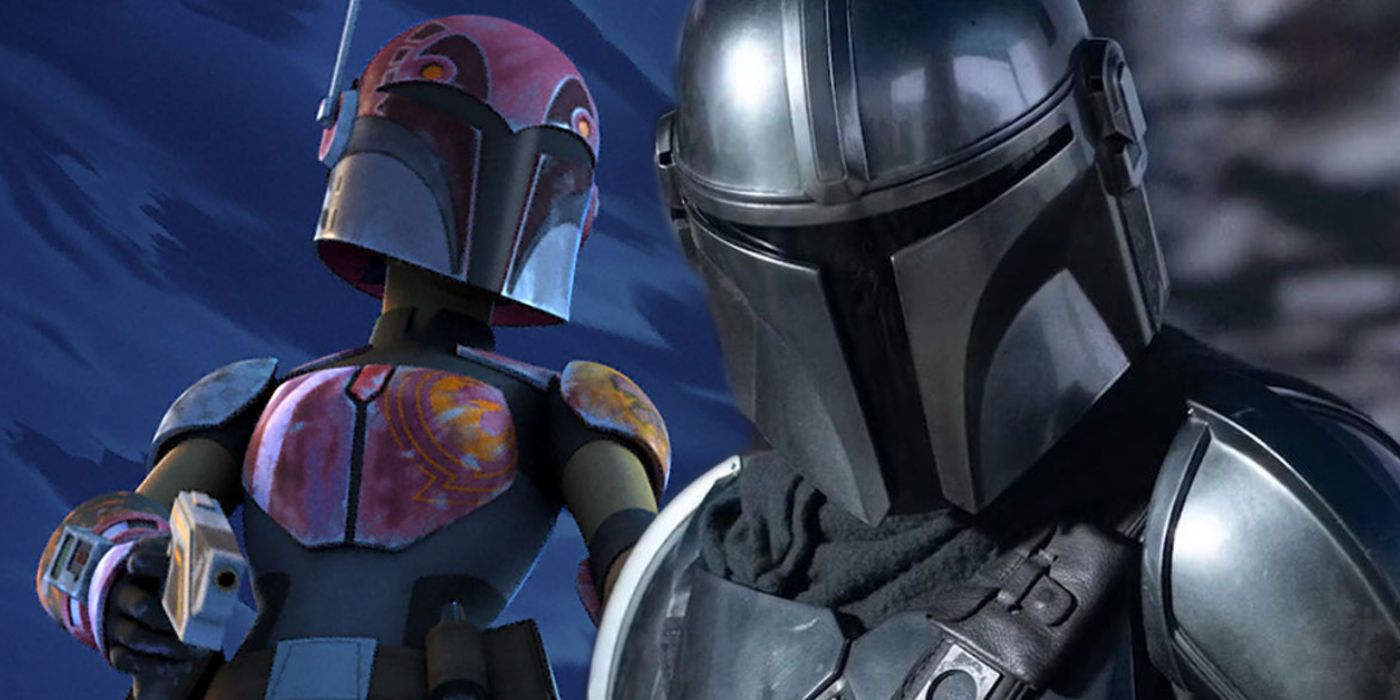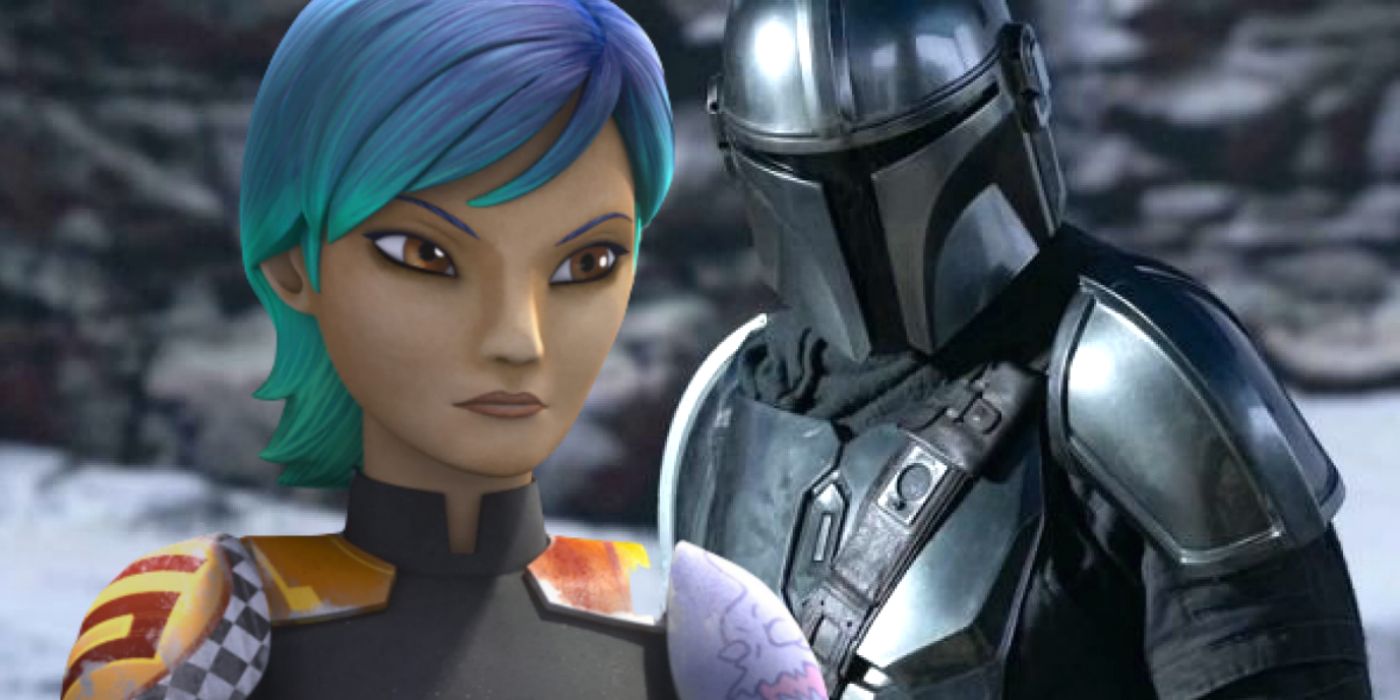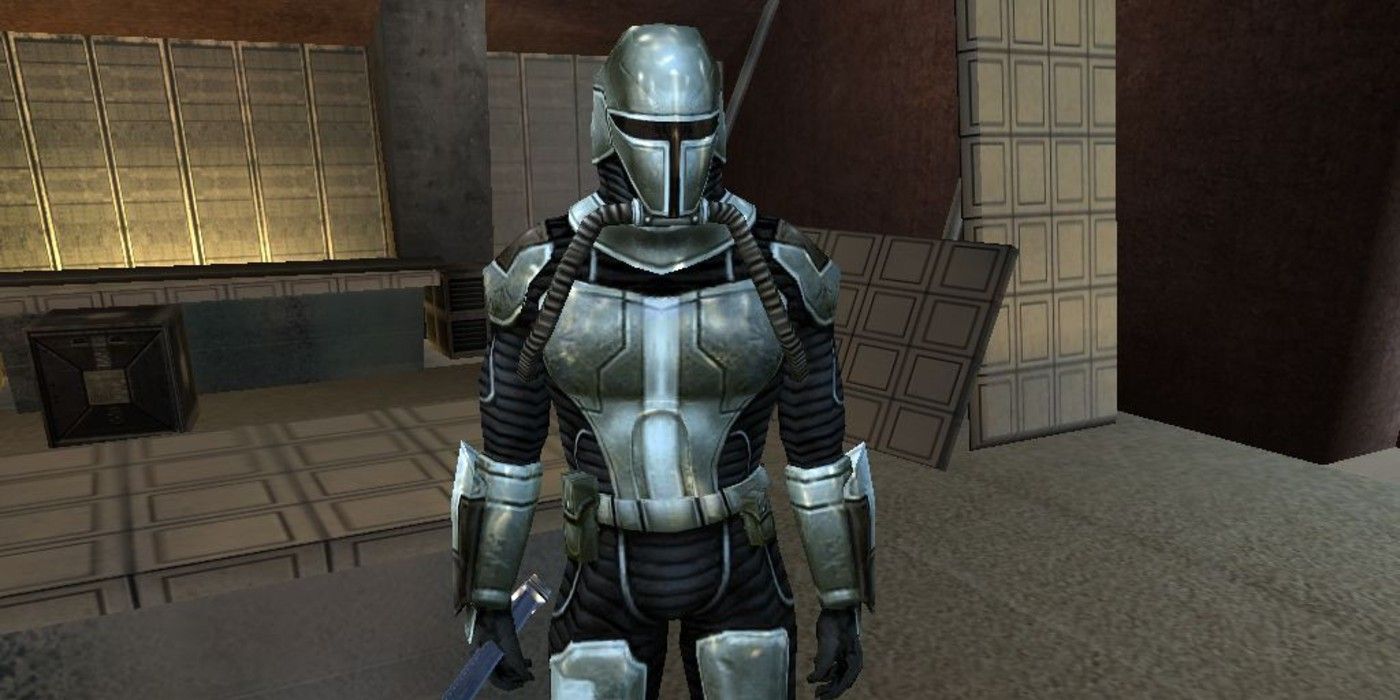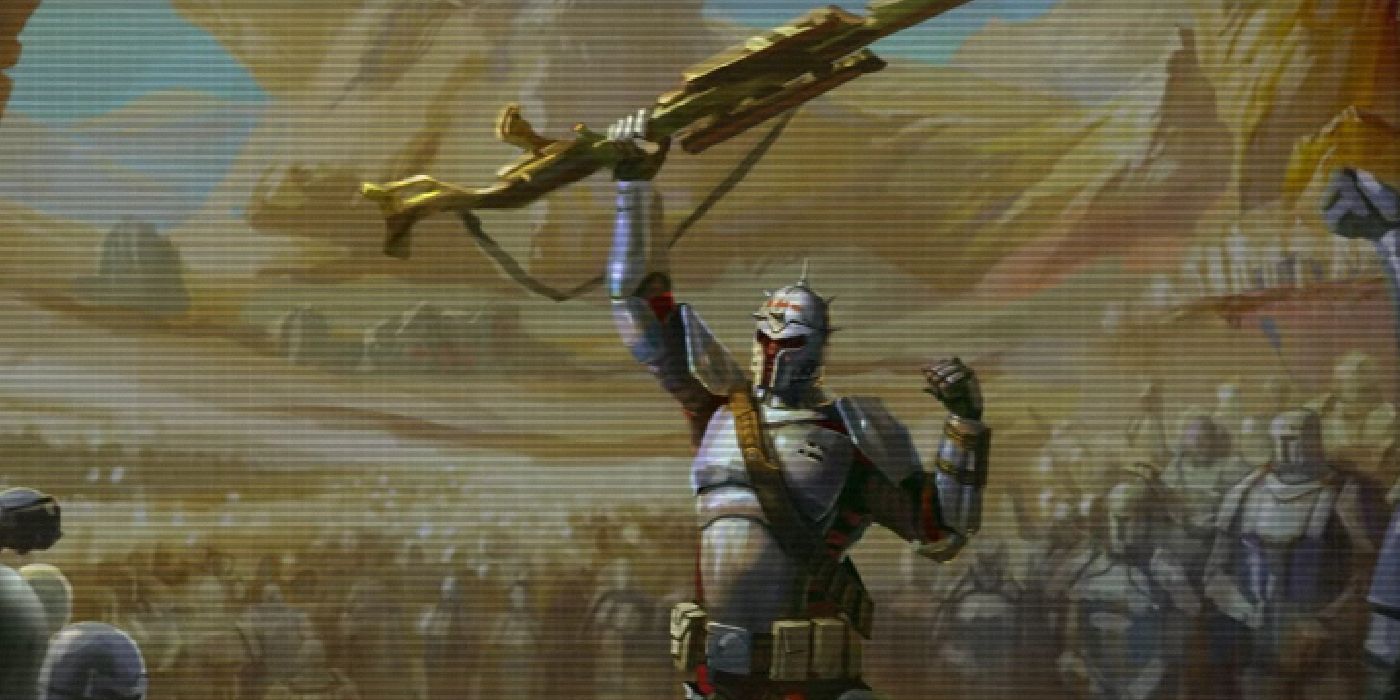The Mandalorian Code has been referenced in The Mandalorian season 2, and it's something that hasn't been explored much in Star Wars canon. The Mandalorians as a race and creed became a cornerstone in Star Wars Legends in the time between George Lucas' original trilogy and Disney's acquisition of Lucasfilm. Much of those stories and characters were inspired by Boba Fett's armor in The Empire Strikes Back and Return of the Jedi, despite the fact that Boba and Jango Fett weren't Mandalorians.
Through novels, comics, video games, and more, Mandalorians and the planet Mandalore were given life and meaning, all of which centered on Mandalorian armor that were made of beskar steel. It wasn't until the Clone Wars animated series that the Mandalorians were brought into Star Wars' true canon. Some details carried over to Star Wars Rebels and then now to The Mandalorian, but considering how popular and important the race was in Legends, it's quite astounding that very little is know about the Mandalorians' way of life in continuity.
Among the many pillars of the Mandalorians' culture are armor, weaponry, war, honor, and duty. Viewers see as much in The Mandalorian seasons 1 and 2, and all of those elements were on display in both animated shows, Clone Wars and Star Wars Rebels. It was the latter show, however, that gave fans the most information through the character Sabine Wren. She was the first person in canon to mention the Mandalorian Code, and in The Mandalorian season 2, the unnamed Frog Lady was the second to do so.
Mandalorian Code In Star Wars Canon
So far, the Mandalorian Code has only been mentioned twice in Star Wars canon even though it's been practiced by several characters; the first time was by Sabine Wren in Star Wars Rebels season 2, episode 13, and the second was by the Frog Lady in The Mandalorian season 2, episode 2. In the first instance, Sabine invoked the Mandalorian Code and challenged Fenn Rau to a one-on-one duel on Concord Dawn, to "seek justice through single combat". Even though Sabine and Kanan Jarrus were outnumbered, Rau still upheld the code and carried through with the challenge. In the second instance, the Frog Lady compelled Mando to follow through on his end of the deal to get her and her eggs to the estuary moon of Trask. After hearing that, Din Djarin indeed did everything he could to repair the ship and get them off the ice planet.
Accepting a duel whenever challenged and following through on deals struck are the only two confirmed tenets of the Mandalorian Code in canon. There's also the fact that Mando never removes his helmet in front of another living thing (note: IG-11 wasn't a living thing). But this is not an official rule that all Mandalorians must follow but rather something that has been ordered upon a subset of Mandalorians, particularly those who remain alive and in hiding as part of the coverts. As Din Djarin noted so often in season 1, it was the "way" of the Mandlorians, not explicitly part of their code. That's not to say, however, that the Mandalorian helmet rules aren't part of that group's Mandalorian Code; it's just not something all Mandalorians have followed before, as seen in Clone Wars and Star Wars Rebels.
Mandalorian Code Of Honor In Star Wars Legends
While the Mandalorian Code hasn't been explained too much in canon yet, it's been used quite a bit in Star Wars Legends, particularly in the Knights of the Old Republic series. In fact, the Mandalorian Code of Honor was detailed in length in supplemental material for BioWare's original Knights of the Republic game. According to the game, the Mandalorian Code of Honor is broken down into three facets: strength, honor, and death - all of which tie into the Mandalorians being a warrior culture centered on armor, weapons, and war. Even as Sabine Wren said in Star Wars Rebels, the Mandalorians have been at war with each other for centuries, perhaps more than they've been in wars with other planets and people.
The Mandalorian Code of Honor says: "Strength is life, for the strong have the right to rule; Honor is life, for with no honor one may as well be dead; Death is life, one should die as they have lived." The first aspect of strength means if Mandalorians meet a weaker person or people, they have the right to conquer them and absorb them into the Mandalorians' way of life. The second part about honor refers to the Mandalorians using combat as a way of maintaining honor; this was hinted at in The Mandalorian season 1 when Mando said the mudhorn's death wasn't an honorable kill since he had help from Baby Yoda. Lastly, death in the Mandalorian Code of Honor doesn't concern a person's death in and of itself, but rather how the person dies. If a Mandalorian dies with strength and honor, then their death is an acceptable one that abides by the code.
Mandalorian Resol'nare Explained
First mentioned in Star Wars Insider and then later used in both the Knights of the Old Republic comics and BioWare's Star Wars: The Old Republic game, the Resol'nare - or Six Actions - became the fundamental guideline for Mandalorians in Legends. While they had laws and ideals, the Resol'nare is what defined them as a race; it was a way of life that made them a warrior culture, one people could join and also adhere to. And though it hasn't been used in Star Wars in a decade, the Resol'nare is still applicable considering some of the tenets have carried over into The Mandalorian.
The Mandalorians' Resol'nare is broken down into six principles: raising children as Mandalorians, wearing the Mandalorian armor, mastering self-defense, devoting one's self to the clan's welfare, speaking the Mandalorian language, and answering the Mandalorian leader's call to action. Considering that these guidelines were only ever used in Legends, they don't apply to current Star Wars canon. However, it's worth noting that Din Djarin does follow aspects of the Resol'nare, such as wearing the Mandalorian armor, knowing self-defense, supporting his clan and other Mandalorians (seen in season 1 whenever he gave the Armorer beskar steel to support the foundlings), and raising children as Mandalorians.
It was revealed in The Mandalorian season 1 that Din Djarin was rescued by Death Watch during the Clone Wars and taken in as a foundling. Then when he grew up, he joined the Fighting Corps, eventually finding himself as a bounty hunter on Nevarro after the Galactic Civil War ended. Even though he operated independently, he and the other surviving Mandalorians still abided by a code of honor that heavily resembles the Code of Honor and the Resol'nare, despite the fact that neither of those have been identified in canon yet.




